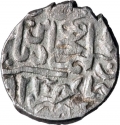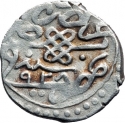You are about to finish your registration. Please check your mailbox (including spam folder). There should be a letter with a confirmation link. Check setting to make sure that your e-mail address is correct.
Send letter againDescription
Mustafa I (c. 1600 – 1639), called Mustafa the Saint (Veli Mustafa) during his second reign, and often called Mustafa the Mad (Deli Mustafa) by historians, was the son of Sultan Mehmed III and Halime Sultan. He was Sultan of the Ottoman Empire from 22 November 1617 to 26 February 1618, and from 20 May 1622 to 10 September 1623. A man of weak mental faculties who was deposed from the throne in 1618 but was reinstalled in 1622 by the Janissaries (elite troops), who dethroned Osman II.
Mustafa’s reign, under the influence of his mother, witnessed continuous interference of the Janissaries in the administration and a revolt in Anatolia of Abaza Mehmed Paşa, who sought to avenge Osman II’s death.
The Eyalet of Egypt operated as an administrative division of the Ottoman Empire from 1517 to 1867. It originated as a result of the conquest of Mamluk Egypt by the Ottomans in 1517, following the Ottoman–Mamluk War (1516–17) and the absorption of Syria into the Empire in 1516. Egypt always proved a difficult province for the Ottoman Sultans to control, due in part to the continuing power and influence of the Mamluks, the Egyptian military caste who had ruled the country for centuries.
Weight varies: 0.80-0.96 g
Obverse

|
Tughra in Mustafa I name, "Sultan Mustafa I ibn Mehmed III Khan". سلطان مصطفى بن محمد خان |
|---|---|
Reverse

|
Arabic legend and Ottoman Turkish legend "Struck in Egypt" and the accession year in Hejira (AH1031) below, with "az nassroh" (May he be victorious) above. عز نصره |
| Edge |







